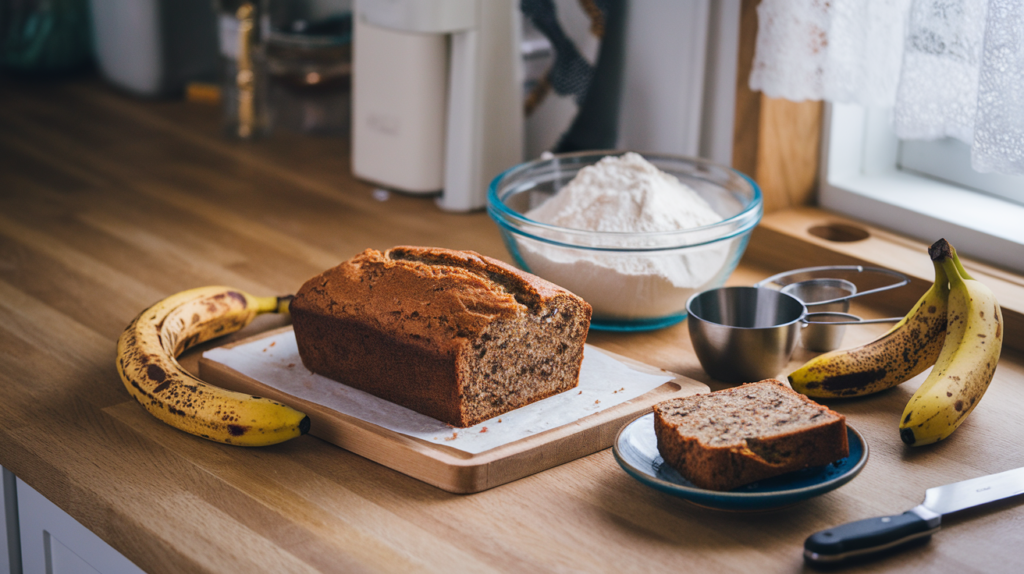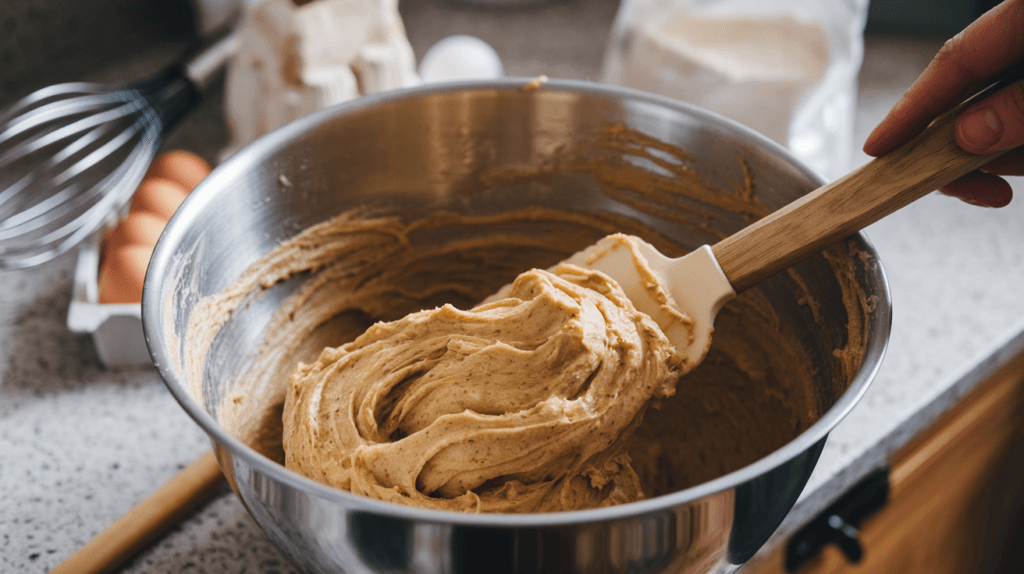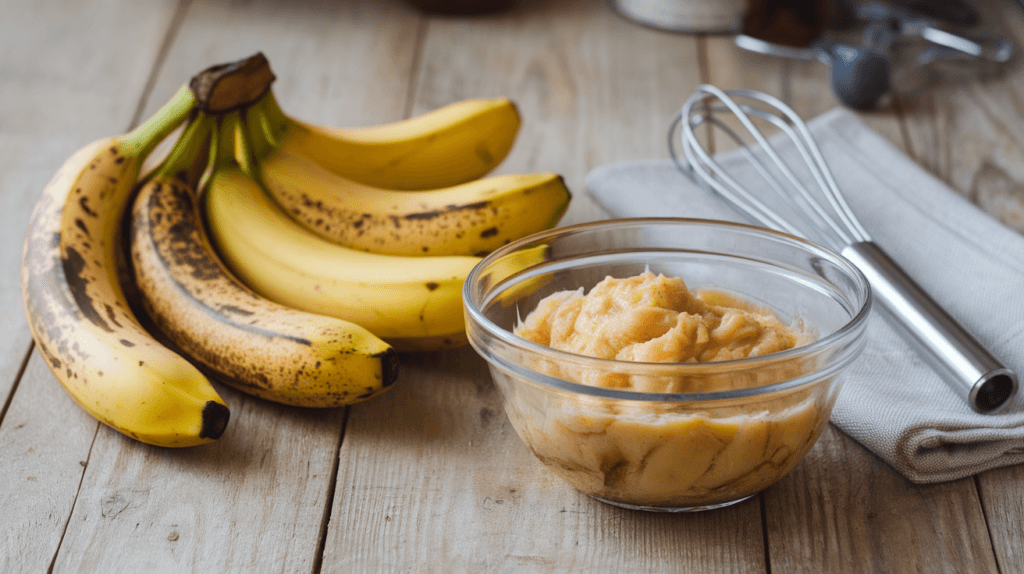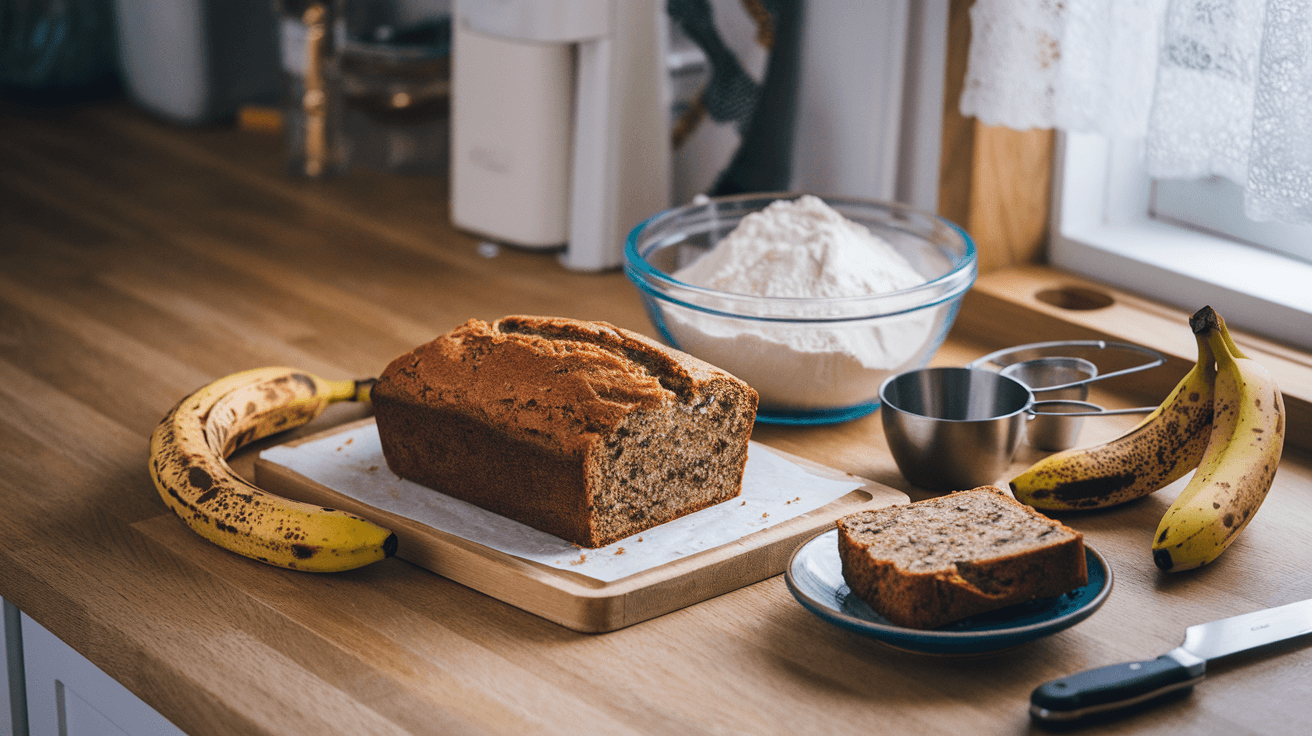Introduction
Banana bread is one of the most beloved baked goods around the world. Its rich flavor, moist texture, and nostalgic aroma make it a comforting treat for many. Whether you’re a seasoned baker or a novice in the kitchen, making banana bread is both simple and rewarding. However, even the easiest recipes can go wrong if you don’t know what the number one mistake is when making banana bread.
In this article, we’ll explore the number one mistake made when making banana bread, along with other common pitfalls. We’ll also provide helpful tips and best practices to ensure your banana bread turns out perfect every time.

What Makes Banana Bread Unique and How to Avoid Mistakes
Banana bread is more than just a delicious treat—it’s a delightful way to transform overripe bananas into something extraordinary. Its origins trace back to the Great Depression, when resourcefulness in the kitchen became a necessity. This classic baked good has since become a favorite for its simplicity and versatility.
The key ingredients that define banana bread include ripe bananas, flour, sugar, eggs, and a leavening agent like baking soda. Many variations exist, incorporating ingredients like chocolate chips, nuts, or spices, but the foundation remains the same.
What sets banana bread apart is its moist, dense texture, and the balance of sweetness and banana flavor. The ripeness of the bananas significantly impacts the final product, making them a crucial component in achieving that signature taste and consistency.
It’s precisely this blend of comfort and customization that has cemented banana bread as a staple in kitchens worldwide. However, the path to perfect banana bread is not without its challenges.
What is the Number One Mistake Made When Making Banana Bread?

One of the most common mistakes bakers make when preparing banana bread is overmixing the batter. While it may seem harmless to ensure all ingredients are thoroughly combined, excessive mixing can significantly impact the texture and quality of your banana bread.
Why Overmixing Happens: A Common Mistake in Banana Bread
Overmixing typically occurs when bakers are overly concerned about blending all ingredients evenly or removing lumps from the batter. Although this is important in certain recipes, banana bread batter thrives on a light touch. The combination of wet and dry ingredients should be mixed until just incorporated—small streaks of flour are acceptable at this stage.
The Effects of Overmixing: Avoiding Banana Bread Mistakes
Overmixing activates the gluten in the flour, which is great for bread that needs structure, like sourdough or bagels. However, for banana bread, it leads to a dense, rubbery loaf instead of the desired moist and tender texture. The excessive aeration caused by overmixing can also result in uneven rising, creating unsightly tunnels and cracks in the finished product.
In essence, the less you mix your banana bread batter, the better the final texture will be. Learning to stop mixing at the right moment is the first step to perfect banana bread every time.
Common Mistakes When Making Banana Bread and How to Fix Them
While overmixing is the number one mistake, several other common missteps can negatively impact your banana bread. Each of these errors can affect the flavor, texture, or overall success of your loaf.
Using Underripe Bananas
One of the most critical ingredients in banana bread is ripe bananas. Using underripe bananas reduces the natural sweetness and the rich banana flavor that makes this baked good so delicious. Overripe bananas with brown spots are ideal because they are soft and naturally sweet.
Incorrect Measurements
Baking is a science, and precise measurements are crucial. Adding too much flour can lead to a dry loaf, while too much sugar can make it overly sweet and dense. Always measure ingredients accurately, using the spoon-and-level method for dry ingredients and liquid measuring cups for wet ones.
Substituting Ingredients Incorrectly
Substituting ingredients without understanding their roles in the recipe can cause issues. For example, swapping butter for oil or sugar for a sugar substitute without adjusting the proportions may result in a loaf with undesirable texture or flavor.
Not Preheating the Oven
Baking banana bread in an oven that hasn’t reached the proper temperature can lead to uneven cooking. Always preheat your oven and use an oven thermometer to ensure the correct temperature is maintained throughout the baking process.
Skipping the Cooling Process
Removing banana bread from the pan too quickly can cause it to crumble, while leaving it in the pan for too long can make it soggy. Allow the bread to cool in the pan for about 10-15 minutes before transferring it to a wire rack to cool completely.
By avoiding these common mistakes, you can elevate your banana bread and enjoy consistently delicious results.
How to Avoid Overmixing: The Number One Mistake in Banana Bread
Preventing overmixing is key to achieving the perfect texture in your banana bread. By following these tips and techniques, you can ensure your batter is mixed just right and your loaf turns out soft and moist.
Mix Dry and Wet Ingredients Separately
A simple but effective way to avoid overmixing is to combine your dry ingredients (flour, baking soda, salt, etc.) in one bowl and your wet ingredients (mashed bananas, eggs, melted butter, etc.) in another. This ensures that when the two mixtures are combined, you don’t have to stir excessively to evenly distribute the ingredients.
Use the Right Tools
Opt for a spatula or wooden spoon rather than an electric mixer. Electric mixers can make it easy to overwork the batter, especially on higher speeds. A spatula allows you to gently fold the ingredients together without overmixing.
Follow the “Just Combined” Rule
When mixing the wet and dry ingredients, stir until the mixture is just combined. It’s okay if you see a few streaks of flour—they will disappear during baking. Resist the urge to keep mixing until the batter looks perfectly smooth.
Incorporate Add-Ins Carefully
If you’re adding extras like nuts, chocolate chips, or dried fruit, fold them in gently at the end of the mixing process. Over-stirring at this stage can lead to the same gluten activation that causes dense banana bread.
Practice Patience
Perfecting the art of mixing takes time and practice. Be mindful of how long and vigorously you’re stirring, and trust that less is more when it comes to banana bread batter.
By implementing these strategies, you can avoid the pitfall of over-mixing and create banana bread with a tender, moist crumb every time.
Tips to Avoid the Most Common Banana Bread Mistakes
To ensure your banana bread comes out perfectly every time, consider these essential tips. From ingredient preparation to baking techniques, these steps will elevate your loaf to the next level.
Start with the Ripest Bananas

The ripeness of your bananas directly impacts the flavor and sweetness of your bread. Bananas with brown spots or fully black skins are ideal as they provide the most natural sweetness and enhance the moist texture.
Measure Ingredients Accurately
Accurate measurements are critical for balanced flavors and proper texture. Always use a kitchen scale for the most precise results, or employ proper measuring techniques for dry and wet ingredients.
Don’t Skip the Prep
Prepare your loaf pan by greasing it or lining it with parchment paper. This ensures easy removal and prevents sticking. Additionally, preheat your oven to the correct temperature for consistent baking.
Adjust for Altitude or Humidity
If you live in a high-altitude area or a very humid environment, you may need to adjust your ingredients or baking time. Research adjustments specific to your location for the best results.
Test for Doneness
Banana bread can look done on the outside while still being undercooked inside. Insert a toothpick into the center of the loaf—if it comes out clean or with a few moist crumbs, the bread is done. If it comes out with wet batter, bake for a few more minutes.
Store Properly
Let your banana bread cool completely before storing it. Wrap it tightly in plastic wrap or aluminum foil to retain moisture. You can also freeze banana bread for up to three months—just thaw it at room temperature before serving.
Experiment with Variations
Once you’ve mastered the classic recipe, try experimenting with add-ins like walnuts, pecans, chocolate chips, or cinnamon for a unique twist. You can also use alternative flours or sweeteners for a healthier version.
By applying these tips, you’ll consistently produce banana bread that’s flavorful, moist, and irresistible. Happy baking!
The Science Behind Perfect Banana Bread
Baking banana bread successfully isn’t just about following a recipe—it’s also about understanding the science behind the ingredients and techniques. Every element in the recipe plays a role, and slight variations can make a significant difference in the final product.
The Role of Bananas
Bananas act as a natural sweetener and a moisture provider. The ripeness affects their sugar content, with overripe bananas providing the ideal level of sweetness and softness for blending seamlessly into the batter.
The Importance of Leavening Agents
Leavening agents like baking soda and baking powder create the rise in banana bread. They react with acidic ingredients (like bananas or sour cream) to produce carbon dioxide, forming air pockets that make the bread light and fluffy. Using the right amount is essential, as too little can result in a dense loaf, while too much can cause an unpleasant taste or uneven rising.
Moisture Balance
Banana bread relies on a delicate balance of moisture. Too much moisture from overly wet bananas or incorrect liquid measurements can lead to a soggy texture, while too little can result in a dry loaf. Ingredients like eggs, butter, or oil contribute to this balance, and substitutions should be made carefully.
Gluten Development
Flour contains gluten, which provides structure to baked goods. However, overmixing activates the gluten excessively, leading to a tough, rubbery texture. Gently folding the batter ensures minimal gluten development, creating a tender crumb.
The Role of Sugar
Sugar isn’t just for sweetness—it also affects the texture and moisture retention of banana bread. It helps achieve a golden crust during baking and contributes to the soft interior.
By understanding these scientific principles, you can troubleshoot problems and fine-tune your banana bread recipe to achieve perfection every time. Baking, after all, is a delicious blend of art and science!
FAQs
1. Why is my banana bread too dense?
Density is often caused by overmixing the batter or using too much flour. Be sure to mix until just combined and measure your ingredients accurately.
2. Can I use frozen bananas?
Yes! Thaw frozen bananas before using them in the recipe, and discard any excess liquid after thawing.
3. How do I make banana bread healthier?
You can substitute whole wheat flour for part of the all-purpose flour, use less sugar, or replace butter with Greek yogurt or applesauce.
4. Why does my banana bread sink in the middle?
This can happen if the bread is underbaked or if there’s too much liquid in the batter. Check for doneness with a toothpick before removing it from the oven.
5. How long does banana bread stay fresh?
When stored properly at room temperature, banana bread stays fresh for about 2-3 days. Refrigeration can extend its freshness to about a week.
6. Can I make banana bread gluten-free?
Yes! Use a 1-to-1 gluten-free flour substitute to make banana bread gluten-free. Ensure your other ingredients are also certified gluten-free.
Conclusion
Banana bread is a classic favorite, but even small mistakes can affect the outcome. By avoiding overmixing, using the right ingredients, and following these tips, you can create a moist, flavorful loaf every time. Whether you’re baking for yourself, family, or friends, mastering the art of banana bread is a rewarding experience. Now it’s time to grab those ripe bananas and start baking your best loaf yet!

